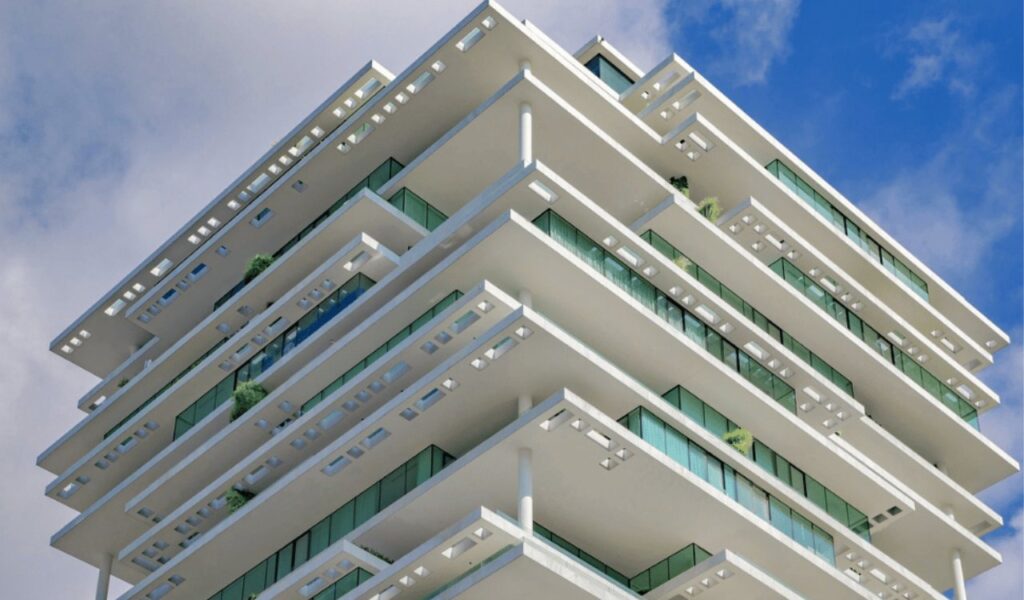Top Places to visit in Beirut – Attractions, Sights and Neighborhoods
The vibrant and enchanting city of Beirut, Lebanon
– a captivating destination that seamlessly blends ancient history with modern charm. As a traveler, prepare to be spellbound by the city’s rich cultural tapestry, bustling markets and a mesmerizing coastline located at the mediterranean sea. From exploring historical landmarks like the Roman Baths and Mohammad Al-Amin Mosque to indulging in delectable Lebanese cuisine at lively cafes, Beirut promises an unforgettable adventure for all who visit.

Raouché Rocks
One of the most sceneric and popular places in Beirut are the Raouché Rocks (Pigeon Rocks). Just a great way to finish a walk in the evening of nice summer day. There are quite a few popular Cafe’s and Restaurants around the symbolic rocks of Beirut and you can enjoy something to eat, drink, or smoke a traditional nargile. The Raouché Rocks are ending the beautiful walking promenade Corniche el Manara.
Corniche El Manara Beirut
The Corniche in Beirut is a 5km long promenade that is located right at the sea and one of the main roads in Beirut. This street never sleeps and especially on the weekends it is full of people walking around and enjoying the mediterranean sunset. The Corniche goes all the way from Zaitunay Bay and the Saint Georges Bay till Ramlet al Baida, perfect for a morning run in the city or a calm evening stroll.
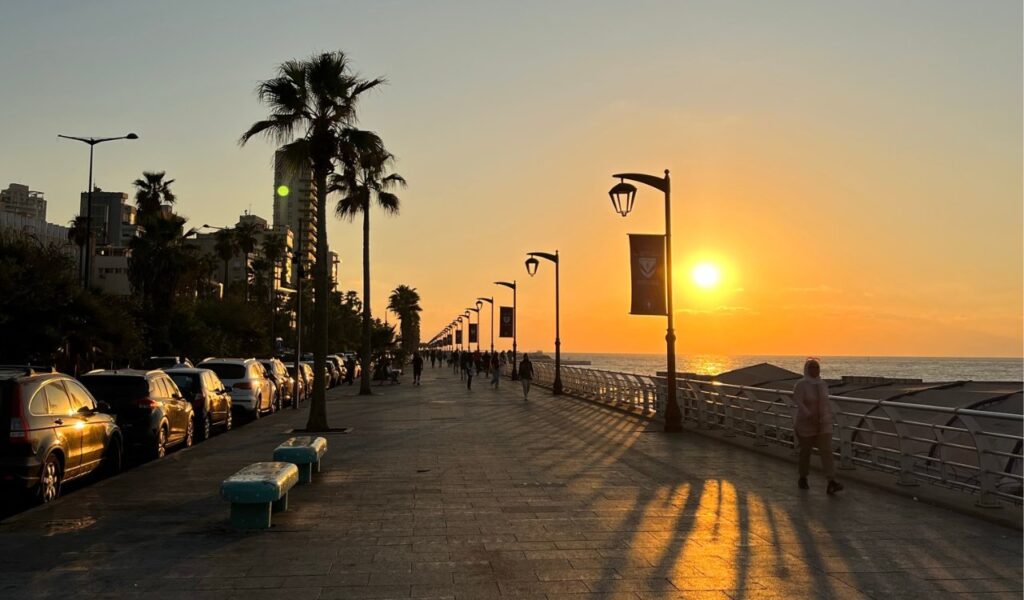
Zaitunay Bay
This yacht harbour is a real hotspot in Beirut and a great way to enjoy the some of the best food in Lebanon. Have a stroll in the marina of Beirut and the luxurious Minet al Hoson neighborhood. The bay is located in the luxurious part of Beirut and surrounded by stunning buildings like Beirut Terraces or the famous Phoenicia InterContinental Hotel. Of course there is a great selection of Restaurants, Cafe’s, Hotels and Stores. Zaitunay Bay is definitely the PLACE TO BE in Beirut.

Downtown Beirut and the Beirut Souks
Downtown Beirut is a stunning village with a unique architecture of french- and mediterranen styled streets and buildings. This whole part of Beirut was built after the civil war in 1990 and was described as the financial, commercial and administrative capital of the city. In Beirut central district you will find the Nejmeh Square, Saifi Neighborhood, Rue Maarad, Roman Baths Garden Ruins, the Martyr‘s Square or the Beirut souks.
The government and parliament of Lebanon is also located in Downtown Beirut, as well as some major headquaters of big companies located in Lebanon.
After the major financial crisis in 2019 in Lebanon, the Martyr‘s Square and the core of the downtown area, became ground zero of protests, demonstrations and vandalization. This led to a major shift in Downtown and many of the businesses left the once popular area. Beside that the Downtown area is still a popular place and a are to visit, when in Beirut.
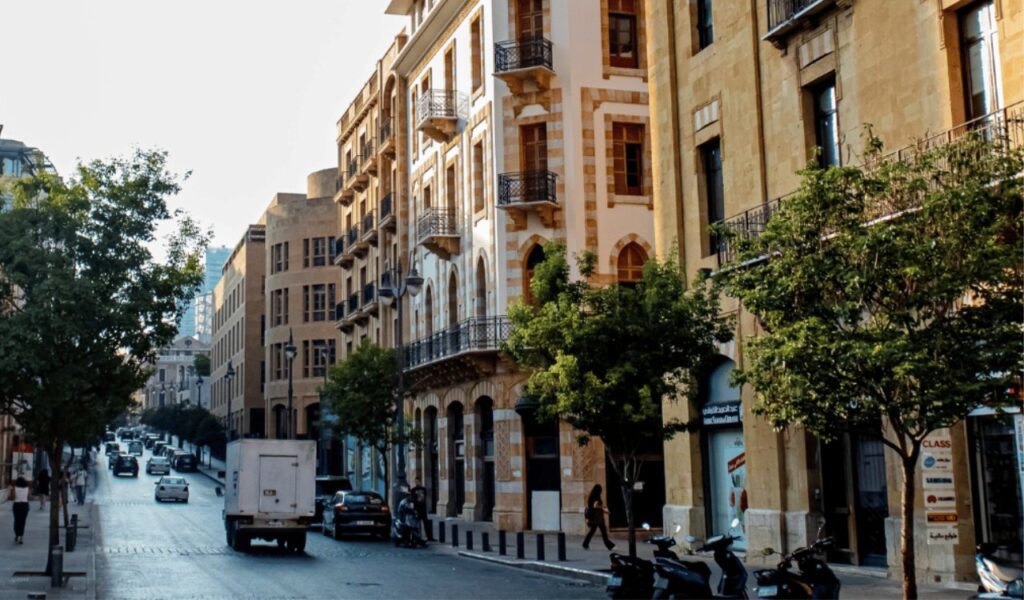
Mohammad al-amin Mosque
The Mohammad al-amin Mosque is definitely a building you can‘t miss when visiting Lebanon. The building was finished in 2008 and is the major Mosque of Beirut city.
St. Georges Cathedral
The cathedral is located right next to the Mohammad al-amin Mosque and is part of the greek-orthodox patriarchs. Under the cathedral you will find a archilogical museum and the Cathedral is surrounded by archaeological excavations from roman times.
Both religios monuments are a MUST-VISIT in Beirut!

American University of Beirut
The so called AUB is located near Minet el Hosn District and at the Corniche of Beirut. It is a private non-sectarian, and independent university chartered in New York with its campus in Beirut, Lebanon. The stunning campus of the University overlooks the Mediterranean Sea and is surrounded by the popular Bliss Street and the Corniche of Beirut. The AUB campus consists of 64 buildings and 3 Museums. One of them is the The Archaeological Museum of Beirut which is the third oldest museum of the middle east and includes a wide collection of 16,000 objects and 10,000 coins from pre-historic Phoenecian times.
Nicolas Sursock Museum
The Nicolas-Ibrahim-Sursock-Museum is located in the historical street of Rue Sursock in Ashrafieh. Sursock Museum is a great example of Lebanese architecture that has Italian, specifically Venetian, and Ottoman architectural influences. The Museum houses a collection of art of the 18th, 19th and 20th centuries.
After the Beirut harbour explosion in 2020, major parts of the building were damaged. A lot of artwork and windows were destroyed. In 2021 the UNESCO and italian government signed an agreement for the renovation of the Museum. The Museum reopened for visitors in 2023 and is definitely an attraction to visit.
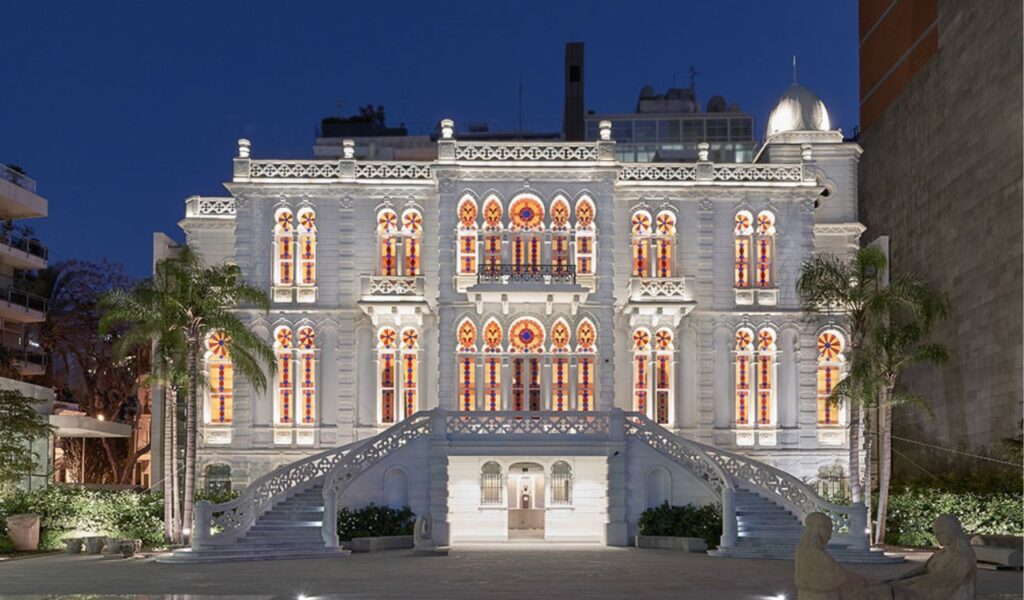
Nationalmuseum of Beirut
The Nationalmuseum is located in the Badaro area of Beirut and the largest archeaological Museum of Lebanon with a collection of 100.000 objects that were excavated in Lebanon. The collection is known for objects from Phoenician times and a lot of antique pieces from the Paleolithic times to the Ottoman Empire.
Saint Elias Armenian Catholic Cathedral
The Cathedral is part of the Armenian Catholic Church and located in the heart of Beirut, right next to Downtown. The construction was funded by 1928 and reflects some changes from traditional Armenian architecture, drawing artistic inspiration from Rome.
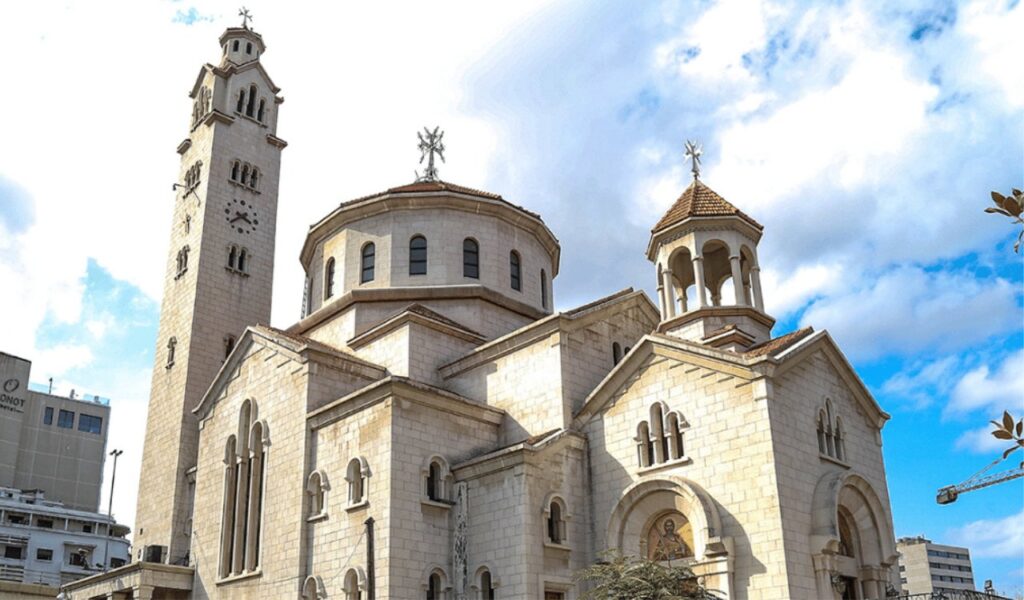
Verdun District and the ABC Mall Verdun
In the middle of the cosmopolitan Verdun district, which is a upscale commercial and residential part of Beirut, you can find a number of Hotels, sidewalk Cafe’s and the big shopping center “ABC mall”. The ABC Mall in Verdun is perfect for a shopping tour, having a coffee and something to eat while visiting Beirut!
Gemmayzeh Street and Saifi village
The Gemmayzeh street is one of the most popular streets in Beirut and located right next to Downtown, the eastern side of Beirut. The Rue Gouraud in Gemmayzeh is a long residential and commercial street and includes a wide variety of historical buildings. You can find a lot of Hotels, Apartments, Restaurants, Cafe’s, Bars, Bistro’s and it is the perfect spot to go out and enjoy the day in beautiful Beirut! The long street of Gemmayzeh stretches till the neighbourhood of Mar Mikhael, which is a popular area to go out in the evening, have Dinner and enjoy the Beiruti Nighlife! The streets of the fashionable and vibrant area are a Must-Visit and one of the most favoured areas for the locals. You can find a wide choice of different Restaurants, Bars, Clubs, Cafe’s and Pubs. You can also visit the St. Nicolas stairs in Gemmayzeh, that directly lead to the Saint Nicholas Church and Sursock Palace.
Different neighborhoods in Beirut
Of course we want to mention some more different areas and places of Beirut, where you can consider to go and explore the different streets, vibes and atmosphere of charming Beirut. You can also plan a car drive through Beirut city and the different neighborhoods to get more insights of the middle eastern way of living and what the big city has in place for you!

Achrafieh District
This Achrafieh area is one of the biggest and more upper class areas of Beirut, where you can find the Sursock Palace and the colorful Zahrat al-Ihsan Street shaped from Beirut’s Ottoman and French Mandate era. A real architectural heritage in Beirut. You will find all kind of businesses around here and can also plan a trip to the ABC Shopping mall of Achrafieh. This neighborhood is loaded with amazing Restaurants, Coffeeshops and Bars to have a good time.
The eastern part of Beirut and the Achrafieh district is more known as the modern suburb of the christians living in Beirut, compared to the western part of Beirut like Hamra and Verdun which is a more islamic part.
Badaro district
Badaro is one of Beirut’s most appealing neighborhoods and has recently become a hip destination for Beirut’s young people and the restless older Beirutis. It’s perfect for a stroll during daytime or a nighlife destination. The Beirut Hippodrome is also located here.
Minet Al Hoson district
The luxurious district of Beirut contains places like Zaitunay Bay, stunning architecture and some of the best spots to eat, drink or enjoy the nighlife. It is a prestigious and also the most expensive area in Lebanon.
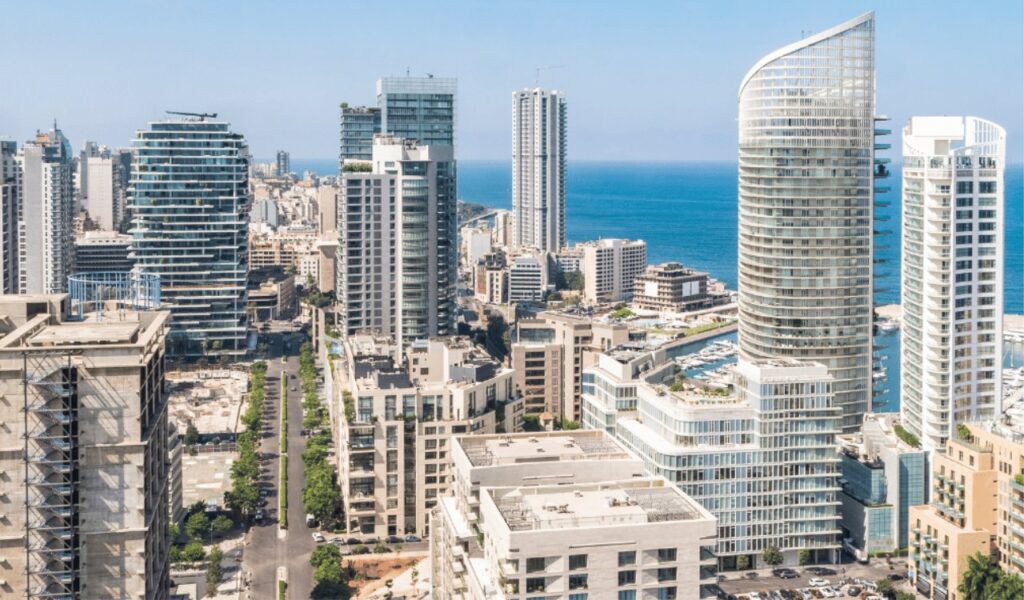
Zalqa, Jal el Dib, Antelias and Dbayeh Neighborhoods
All those districts are located right at the sea on the eastern side of Beirut. It is home for a lot of Beirutis that happily located in a greater distance from all the hustle and bustle of Beirut. You can find countless Beachclubs, Chalets, Guesthouses, Bars, Clubs and of course a wide choice of places to eat and drink in all of those areas. If you crave something sweet, just take the eastern Highway and stop wherever you want, to enjoy the wide range of lebanese patiserie spots. These areas and surroundings are known for endless lebanese patiserie shops.
Sin el Fil and Hazmieh
Both districts are located in nothern part of Beirut and part of the Mont Liban government. The areas are located at a much higher sea level which gives you a good view over Beirut. Both are some interesting subburban areas of Beirut.
Mar Mikhael
Located at the seaside of eastern Beirut, Mar Mikhael borders the Gemmayzeh area and is full of nightlife and the most vibrant are of Beirut. You will find loads of bars, pubs, restaurants and good vibes in the night. Also the Beirut harbour is around the corner.
Tariq El Jdideh
The Tariq El Jdideh area is a really bourgeois part of Beirut and mainly home to the muslims community based in Beirut. You can find some of the most authentic food spots for the locals in Beirut. This neighborhood is the opposite of touristic, but definitely an important part of Beirut that gives insights of the living for most of Beiruts people.
Hamra
Hamra Street also called “Rue Hamra” connects the east and west of Beirut city and is known as one of the main streets in Beirut. You can find numerous Restaurants, Bistros, Cafe’s, Shops and Hotels on the street and with the central position, it is in walking distance from a lot of important areas of Beirut.The once central street in Beirut lost a lot of it’s glamour with in the last years and the economic crisis. Unfortunately a lot of shops and stores closed and strolling around the street is not what it was before. But you can definitely enjoy a delicious Shawarma- or Falafel Sandwich at the famous Barbar Restaurant or search for the most popular places in Hamra.
Msaytbeh
A part of Beirut where the life of a lot of locals takes place. Nothing touristic, but of course an important part of the Beiruti Community.
Bourj Hammoud
It is based in the north-eastern part of Beirut and home for a lot of armenias living in Lebanon. Also a known shopping district for textiles, jewelry, interior design and fine pastries.
Welcome to Beirut!
This Beirut Guide should be helpful for you to choose your next attractions, sightseeing spots and neighborhoods while visiting Beirut. Of course there is so much more to visit in Beirut! Just explore our PlacetoBeirut Platform and more Blog articles to get as much insights, tips and recommendations as possible.
Have a nice stay in Beirut and enjoy the lebanese way of life!
